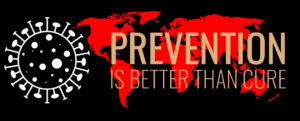We all know that the climate is changing. But we don’t know how rapidly it is changing? Well, we all experience the rotational cycle of the seasons is not as we expect or as we experienced before. Summer is becoming longer and more extreme. Tropical storms are becoming more severe and frequent. Greenhouse gases trap more heat in the atmosphere causing less snowpack in mountain ranges and glaciers are melting faster than before. More interesting part is that all of this information and data are collected every moment using thousands of weather recording stations around the world.
A little bit of online research will give you all of these information at any point of time. We are experiencing unprecedented rapid warming weather than what it used to be before. Climate change can be a natural process over a decade or more. However, current rapid weather changes are happening because of human activities, and mainly due to the burning of fossil fuels that generate greenhouse gas emissions.
Many think, climate change mainly means warmer temperatures. Temperature rise is only the starting point. Worse is yet to come. Everything is interconnected here on Earth; Changes in one area can influence changes in all others. The consequences of climate change now include intense droughts, water scarcity, severe fires, rising sea levels, flooding, melting polar ice faster, catastrophic storms and declining biodiversity, food scarcity and many more.
We are experiencing climate change in diverse ways. It affects our health, ability to grow food, housing, safety, and work. Some of us are already more vulnerable to climate impacts, such as people living in poverty, workers, and daily labors. Conditions like sea-level rise and saltwater intrusion have advanced to the point where whole communities have had to relocate. In the future, the number of “climate refugees” is expected to rise drastically.
Limiting global temperature rise to no more than 1.5°C would help us avoid the worst climate impacts and maintain a livable climate. Yet the current path of carbon dioxide emissions could increase global temperature by as much as 4.4°C by the end of the century. The 100 least-emitting countries generate 3% of total emissions. The 10 largest emitters contribute 68% of total emissions.
However, most of this pollution comes from just a few countries: China, for example, generates around 30% of all global emissions, while the United States is responsible for almost 14%. And India contributes about 7% of all global emissions. In the ranking below you can find the 10 countries that produce the most emissions, measured in millions of tons of CO2 in 2019. When we compare this data along with countries population and landmass then data is really shocking. China contributes 30% of global emission with 6.3% landmass share and 18.7% world population share. India contributes 7% of world emission with 2% landmass share and 17.57% of world population. Whereas United state contributes 14% emission with 6.1% of landmass share and 4.14% world population. In addition to this please keep it in mind United States holds 16.75% partner share china’s import to United State alone (As of 2019).
| 1 | China | 10,065 |
| 2 | United States | 5,416 |
| 3 | India | 2,654 |
| 4 | Russia | 1,711 |
| 5 | Japan | 1,162 |
| 6 | Germany | 759 |
| 7 | Iran | 720 |
| 8 | South Korea | 659 |
| 9 | Saudi Arabia | 621 |
| 10 | Indonesia | 615 |
Increasing temperatures over time are changing weather patterns as well throughout the year. And disrupting the usual balance of nature too. This invites many risks to human beings and all other forms of life on Earth and as a result, the Earth’s ecosystem is getting imbalanced slowly. It is just a matter of time and having an unknown fear factor that something bad will happen but it is hard to predict at what scale it will impact lives on Earth.
Enough of talking about problems and issues, now let’s talk about the solution. And the solution is we have to change ourselves. And it is a huge change and a difficult one too. First of all, we must educate ourselves about climate change and what causes climate change. As an individual, we must educate others as well in and around our society. Most will ignore us and few will appreciate but very few will follow.
It is equally true that climate change requires drastic changes in infrastructure and laws. Investing in resilient infrastructure to deal with clement changes. It may require a huge investment however in return it will also generate jobs, and will provide benefits post-investment. Better weather management and better water management could improve the economic growth rates of our country as well.
Climate change is a global subject which means every economically strong country county needs to take proactive participation in the change. Beyond profit, every government has to ensure they encourage renewable energy usage and reduce single-use plastic to a greater level. It is the responsibility of all countries to take coordinated action to reduce greenhouse gas emissions at all costs. The Intergovernmental Panel on Climate Change (IPCC) is the United Nations body for assessing the science related to climate change. They provide various scientific information to governments at all levels to develop climate policies and action plans. IPCC has 195 members across the globe.
The Earth is now about 1.1°C warmer than it was in the 1800s. 2015-2019 were the five warmest years on record while 2010-2019 was the warmest decade on record. The global surface temperature has increased faster since 1970 than in any other 50-year period over at least the last 2000 years. On the current path of carbon dioxide emissions, temperature could increase by as much as 4.4°C by the end of the century. In 2019, greenhouse gas concentrations reached new highs. Carbon dioxide levels were 148% of preindustrial levels. Greenhouse gas concentrations, already at their highest levels in 2 million years, have continued to rise.
In this article, we didn’t talk about Net Zero. I deliberately left it for future discussion. However, besides all governmental action plans and laws and changes to reduce greenhouse gas, we must put efforts to see as an individual what changes we can do deal with climate change and also help others to adopt it.







